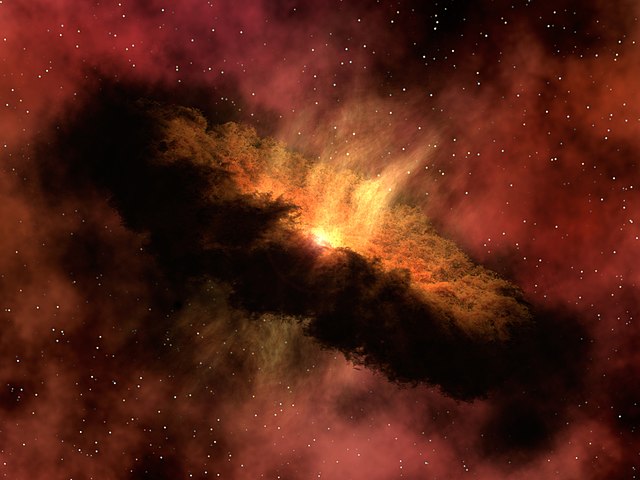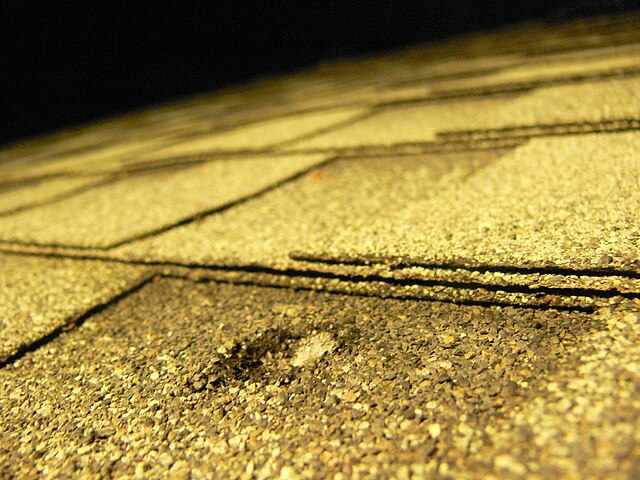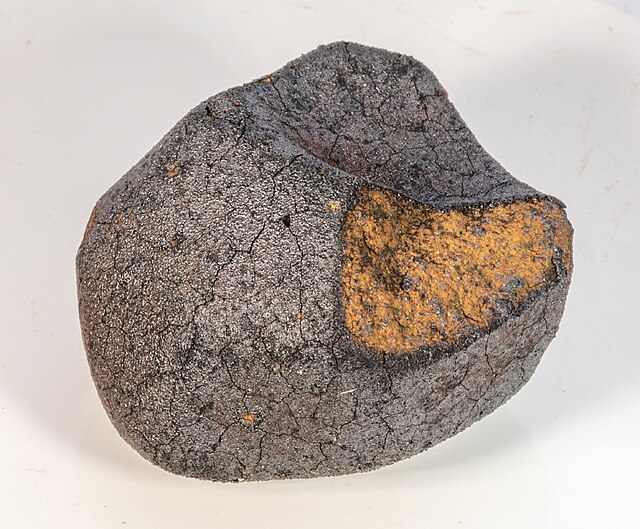A chondrite is a stony (non-metallic) meteorite that has not been modified, by either melting or differentiation of the parent body. They are formed when various types of dust and small grains in the early Solar System accreted to form primitive asteroids. Some such bodies that are captured in the planet's gravity well become the most common type of meteorite by arriving on a trajectory toward the planet's surface. Estimates for their contribution to the total meteorite population vary between 85.7% and 86.2%.
A specimen of the NWA 869 chondrite (type L4–6), showing chondrules and metal flakes
Protoplanetary disk: particles of dust and grit collide and accrete forming planets or asteroids
Chondrules in chondrite from the Bjurböle meteorite
Chondrules in chondrite from the Grassland meteor
A meteorite is a rock that originated in outer space and has fallen to the surface of a planet or moon. When the original object enters the atmosphere, various factors such as friction, pressure, and chemical interactions with the atmospheric gases cause it to heat up and radiate energy. It then becomes a meteor and forms a fireball, also known as a shooting star; astronomers call the brightest examples "bolides". Once it settles on the larger body's surface, the meteor becomes a meteorite. Meteorites vary greatly in size. For geologists, a bolide is a meteorite large enough to create an impact crater.
The 60-tonne, 2.7 m-long (8.9 ft) Hoba meteorite in Namibia is the largest known intact meteorite.
NWA 859 iron meteorite showing effects of atmospheric ablation
The impact pit made by a 61.9-gram Novato meteorite when it hit the roof of a house on 17 October 2012.
Meteorite fallen near Flensburg in 2019.








